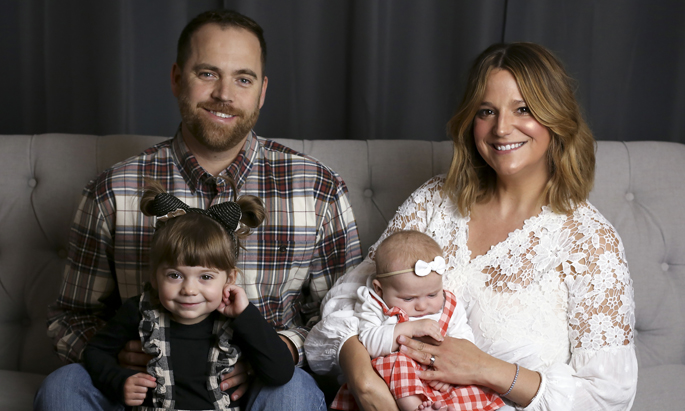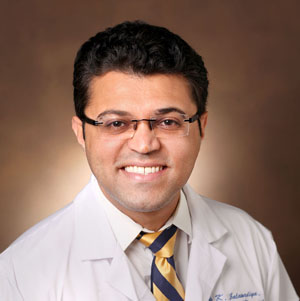
by Matt Batcheldor
Brandon Cochran, a 39-year-old real estate agent in Louisville, Kentucky, was at home with his family in October 2020 when he went into cardiac arrest. His implanted defibrillator shocked him back to life, and he was hospitalized for seven months. His condition continued to deteriorate, though, and he wasn’t initially considered a good candidate for a left ventricular assist device (LVAD) because of his history of congenital heart disease.
Cochran was flown by helicopter to Vanderbilt University Medical Center, where in June 2021 he received the HeartMate 3, a cutting-edge LVAD — an implantable, mechanical support system that pumps blood through his body when his heart is too sick to do it. Vanderbilt Heart and Vascular Institute (VHVI), one of the highest-implanting LVAD centers in the United States, recently celebrated a milestone of implanting 100 HeartMate 3 devices.
Cochran’s LVAD has allowed him to leave the hospital and spend more time with his family — wife, Amy, and daughters Olivia, 4, and Stella, 2.
“I knew from the first hour I was there (at Vanderbilt), just the way they were talking, how precise they were with everything, I knew I was in the right spot,” he said. “I knew I finally found a place that was going to help me. I can’t be grateful enough.”

The HeartMate 3 is one of a spectrum of devices Vanderbilt uses to serve two populations of end-stage heart failure patients whose medical management is failing. For some, it’s a destination therapy to serve them for the rest of their lives. For others, such as Cochran, it’s used as a bridge to stay alive until a heart transplant. He hopes to be placed on the transplant list this fall.
The HeartMate 3, one of the latest generation of LVADs, has multiple advantages, said Sandip Zalawadiya, MBBS, medical director of the Ventricular Assist Device program at VUMC.
“The risk of clot or thrombosis is extremely low with this device. That’s one of the big benefits of it,” he said. “The risk of stroke is also less with this device, compared to what we had before. And also, because the pump is so resistant to making clots, we can be less aggressive with the blood thinners and as a result, your bleeding risk is also slightly lower than the previous generations of pump.”
Ashish Shah, MD, professor and chair of Cardiac Surgery, added, “Durable mechanical solutions for heart failure continue to evolve. This group’s milestone reflects our maturation as one of the most experienced and tirelessly patient- centered teams at VUMC and, frankly, in the world.”
According to Kelly Schlendorf, MD, MHS, director of the section of Heart Failure and Transplantation and medical director of the Adult Heart Transplant Program, “The growth and success of our transplant program in recent years has been due in large part to the growth and success of our LVAD program.”
Cochran said the HeartMate 3 has allowed him to celebrate milestones. He recently celebrated Stella’s second birthday and saw Olivia off for her first day of kindergarten.
“The LVAD has been very therapeutic,” Cochran said. “It got me out of the hospital. If I didn’t have the LVAD, I’d still be in the hospital for sure. Also, if I didn’t have the HeartMate 3 particularly and I had another type of LVAD, I still might be in the hospital. That … has really allowed patients to be mobile.”
“The celebration of this spectacular milestone is, in fact, the celebration of our wonderful patients and team members.” Zalawadiya said. “Apart from many talented doctors and inpatient nurse practitioners, we are thankful to have highly-skilled, dedicated and caring nursing coordinators — Cayce Ake, RN, Jessica Hassler, RN, and Kerry Rechel, RN — our outpatient nurse practitioner, Casey West, ANP, and several other crucial members that make this one large family.”












